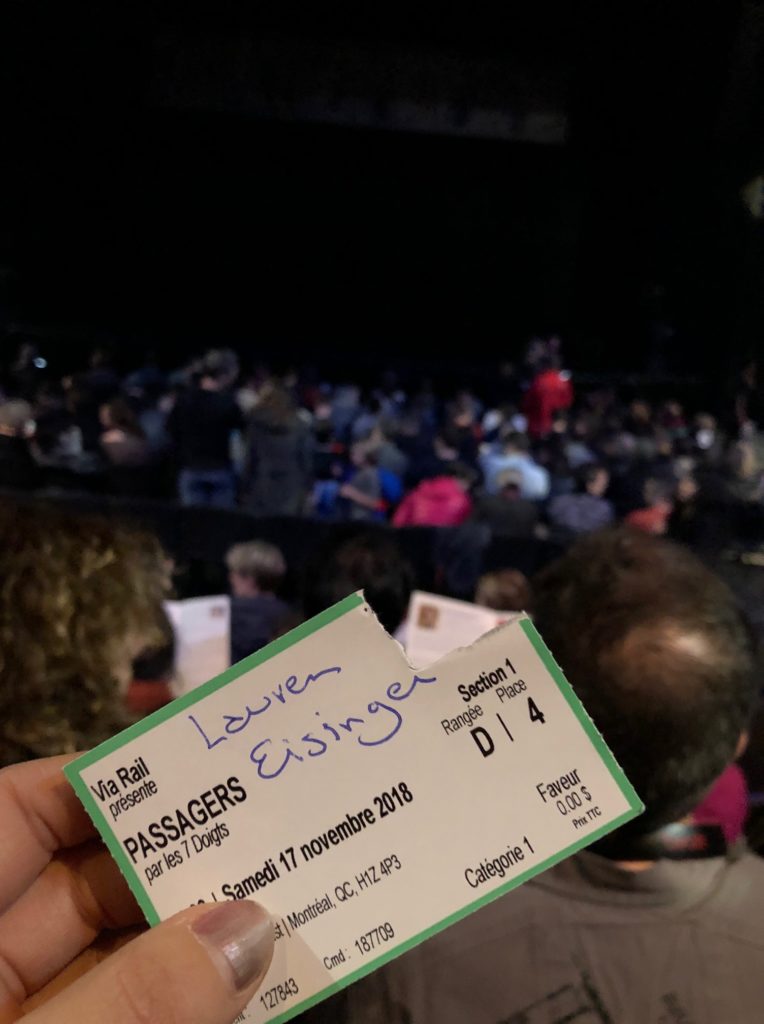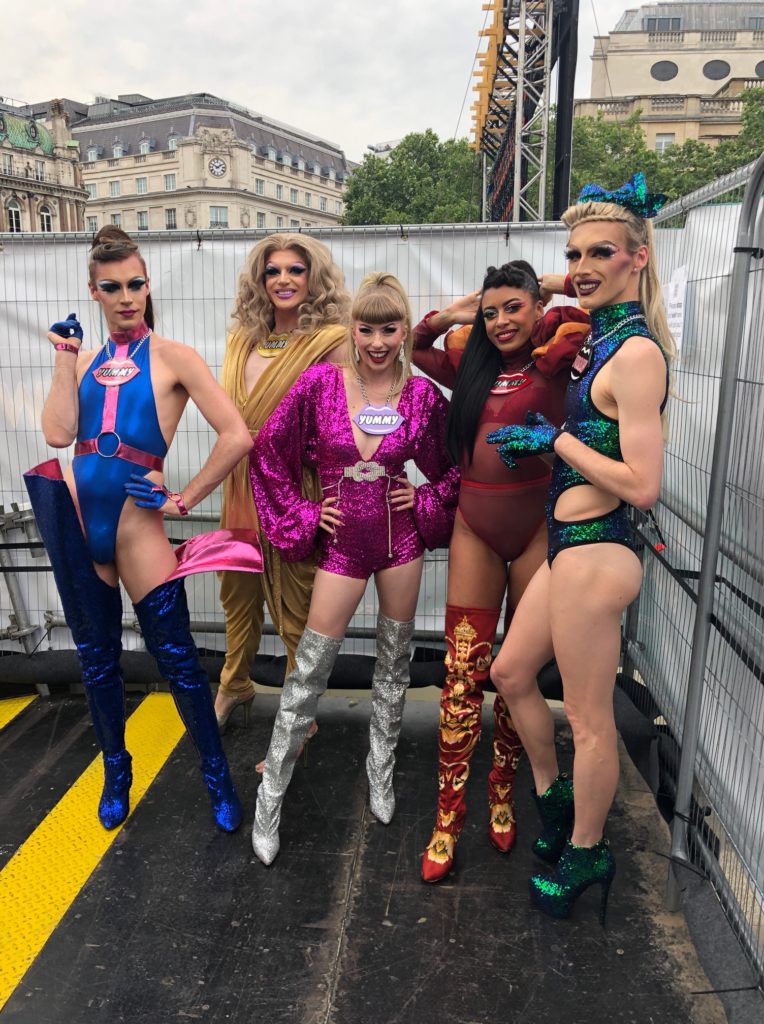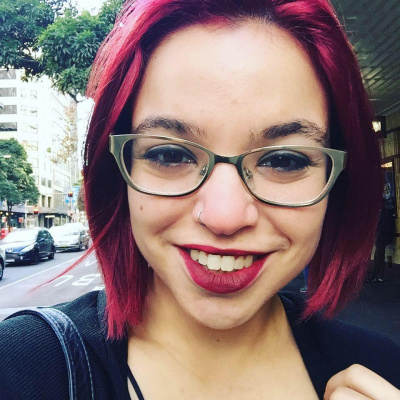Piecing It Together – How a Group of Circus Performances Becomes a Festival
It’s about 2013, I’m a recent university graduate, a wide-eyed and keen emerging producer in my early twenties and listening to a talk with an established producer who tells us about a turning point in her career. “I took my show overseas to Edinburgh Fringe — I knew it would do well there,” she tells us, “And from there the touring opportunities opened up and the show took off.”
It’s an idyllic success story, but I was concerned not with the show’s subsequent touring but the key programming decision on which so much was initially risked.
“How were you so certain it would succeed in Edinburgh?” I asked.
To which she replied, “I’m not entirely sure. I just knew.”
“I just knew”?!
At the time I wasn’t satisfied by that answer, but I didn’t have any other, so I shelved the question and allowed it to pop back to the front of my consciousness each time my developing experience could contribute a piece of information towards an answer. I think now, somewhat further along in my producing and programming career, I’m able to articulate what was meant, and hope it might help some others navigate their paths.

As programmers, we get to shape our cultural narrative and memory, influence our values and shape the artistic landscape. We are the connection between artist and audiences and the role can be very broad. This is all very ephemeral, and so often I am confronted by questions and conversations that show a lack of understanding about what it is we programmers actually do. Programming is not a hugely transparent process, but hopefully in shining a light on the basic mechanics we can build stronger relationships between artists, companies, presenters and programmers. Let’s take a little look at how we get from a blank page to a festival program.
Identifying our Audience
The first question we have to ask ourselves is, “Who are we programming for and why?” This deceptively simple question will underpin every decision we make. Once we have identified our audience and motivations (is there a commercial drive? Is there a reason why this work is urgent now? Do we want to broaden our audience base or tell new stories?) we have a blueprint for what a successful program looks like, and it’s time to start assembling a long list of works that speak to that remit.

In this job, research is a full-time and year-round undertaking broadly broken into two parts – what is in the marketplace and what is in development? To develop a picture of works that are currently touring or available, I will see approximately 150 works per year, of all scales and sizes. I take a keen interest in the programs of other venues and festivals and speak with programming colleagues about their research, experiences and choices. My department will receive invitations for between two and ten or more productions per week depending on the season and although we won’t be able to attend them all, will make a decent attempt and we’ll often watch productions on film when we can’t attend a live performance. Industry markets and showcases are another excellent platform for connecting with companies and their work, and I might attend two or three per year anywhere from Adelaide, Australia to Montreal, Canada.
Relationships and Timelines

Finding what is in development relies heavily on relationships. I make a point of catching up with agents, artists and producers about the work they are creating, their future plans and ideas, and what might be coming to fruition and when. Programming timelines vary but I’m often keeping a record of work that will be available up to 2 years ahead and as short as mere months away from performance dates. Keeping abreast of what is coming onto the market is vital to keep creating current and relevant programs. I regularly look at companies that are awarded development or touring grants and awards, knowing these funded works will likely be available for future presentation.
If a work looks like an interesting programming prospect the next step is to see if it is available and feasible. Do we have technical capacity to deliver the work, does it physically fit in the available space, and not just physically but will the space provide an atmosphere and proximity that supports the artistry of the work? Just because a work physically and technically fits, doesn’t mean it does artistically, as each space has its own ambience.
Venue – More Than the Four Walls
We once programmed a show with incredible energy that exploded off the stage, filled the space around the audience and created an uplifting, larger-than-life experience with incredible circus and live music. After its initial success it was transferred to a smaller space in London for a second season. Although the space was smaller, the company were very keen to make it happen and we were keen to support them. However, after solving each of the many problems that came with a venue transfer, the season was not taking off as it had previously. I sat watching the show with an icy realisation. By pushing the work into a smaller venue we had unintentionally compromised on scale and stifled the very feeling that had drawn us to program the work in the first place. What we were now delivering was a fundamentally different experience for our audiences even though they were seeing the same choreography, design and music.
In an environment of constant problem solving and ‘making it work’ sometimes the brave thing to do is say no. Even if it can be done, should it be done?
On the other side, when both artist and programmer have a united vision of what might be possible and are willing to work collaboratively at every turn, solving every problem in pursuit of that ideal, the moment it sings to an audience and all comes together is magic.
Once, when a production required much more space for storage and performance than we currently had in the venue, I asked our Production Manager if I could help solve the problems in any way, to which he looked pointedly at me and said “Don’t worry, I’m just turning this venue into a Tardis,” and his eyes added ‘his problem is your creation.’ But we built extra staging, adjusted the established truss design, hired some additional crew and found the extra space the company required while they re-choreographed moments and adjusted their lighting design. When we opened to adoring audiences and critics, I was reminded with pride and relief exactly why we do the job we do.
The Bottom Line

Finally, you have to determine if the work is available on your budget and resources. I try and make sure I have as much of an understanding of the way the company works as I can, which helps me to finalise a deal that supports them in the best way possible. Are there expenses on their end that are easier for us to pick up? Do we have resources other than finances that can assist and support the delivery of the season?
Once we have established suitability, availability and feasibility, we need to curate an experience for our audiences. A program tells a story whether or not we are consciously shaping this. Who is represented? What voices are amplified? What genre and styles of work are programmed? Importantly, who or what has been left out? Our program is stronger if we are conscious of the narrative we want to tell, and shape it according to our values and motivations. I’ve fought for works to be placed in a program because they are important stylistically or narratively even when they were not the biggest blockbusters, and I’ve also been unable to program works I adore because we don’t have space in the right venues or I’ve already committed to something similar. Last year, when we came to do programming offers for Edinburgh Fringe we were oversubscribed for shows suitable for a late night spot in our Spiegeltent, so even though I loved every show on the shortlist, several would miss out on being programmed.
The above process doesn’t happen in a linear way, but much more like a complex game of Tetris. As each decision and confirmation is made, the options for remaining programming becomes more restrictive as each new element pushes and pulls the big picture in different directions.
Once it’s established that a work is of exceptional quality and could be right for a program, it then has to be available, feasible and fit well within the overall curation. A colleague at Sydney Festival once summarised this matrix by saying, “I get to actually program about one in every hundred works I see.”
The research is constant and relationships are vital. These foundations allow us to make important decisions around the shape of a season and the stories we tell. We spend countless hours developing a detailed picture of the current and developing marketplace so that when the time comes to curate we can pull the program together, and “just know” that our choices will be the right ones.
Feature photo credit: Kim Campbell. All other photos courtesy of Laura Eisinger....
Do you have a story to share? Submit your news story, article or press release.




